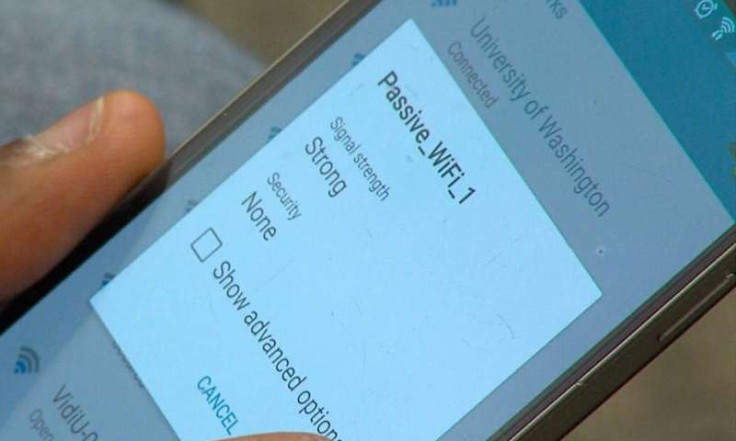New 'Passive Wi-Fi' breakthrough using 10,000 times less power will save your smartphone battery

Computer scientists and electrical engineers from the University of Washington (UW) in the US have found a way to make Wi-Fi much more energy efficient so that it stops placing a strain on your smartphone or tablet battery.
The researchers have developed a new technique for generating Wi-Fi that uses up to 10,000 times less power than the typical Wi-Fi does today, and even more surprising, this "Passive Wi-Fi" also uses 1,000 times less energy than both Bluetooth Low Energy and Zigbee.
"We wanted to see if we could achieve Wi-Fi transmissions using almost no power at all," said co-author Shyam Gollakota, an assistant professor of computer science and engineering at UW. "That's basically what Passive Wi-Fi delivers. We can get Wi-Fi for 10,000 times less power than the best thing that's out there."
Passive Wi-Fi can transmit Wi-Fi signals at bit rates of up to 11Mbps, and while that isn't as fast as the top Wi-Fi speeds you can get today, it is fine for a mobile device while still being 11 times faster than Bluetooth connections.
How Passive Wi-Fi works
When radio was first invented, signals were transmitted using analogue, whereby information is sent by changing the shapes of waves and making direct physical changes. The radio signal becomes part of the sound wave carrying it and if anything happens to that sound wave, the signal will be lost. To solve this problem, digital radio was then invented to send radio broadcasts in a coded, numeric format to make sure that interference can't disrupt the signal.
To make low power Wi-Fi signals possible, the researchers decoupled analogue and digital, so that the analogue, power-intensive functions, for example producing a signal at a specific frequency, was limited to just one device on the network that is plugged into the wall.
Then, an array of sensors were used to absorb the signal and reflect Wi-Fi packets of information using a digital switch, and the researchers found that the smartphone could pick up Wi-Fi from these sensors even from a distance of 100ft.
"Our sensors can talk to any router, smartphone, tablet or other electronic device with a Wi-Fi chipset," said co-author and electrical engineering doctoral student Bryce Kellogg. "The cool thing is that all these devices can decode the Wi-Fi packets we created using reflections so you don't need specialised equipment."
Wi-Fi could soon be used for everything
Besides meaning that consumers won't have to rush to a power point or mess about with often fiddly smartphone chargers, this breakthrough could make a huge difference to the burgeoning Internet of Things (IoT) market as it means that smart devices in the home or office will be able to communicate via Wi-Fi without being drained as quickly.
"Even though so many homes already have Wi-Fi, it hasn't been the best choice for that," said co-author Joshua Smith, UW associate professor of computer science and engineering and of electrical engineering. "Now that we can achieve Wi-Fi for tens of microwatts of power and can do much better than both Bluetooth and ZigBee, you could now imagine using Wi-Fi for everything."
The open-access paper, entitled Passive Wi-Fi: Bringing Low Power to Wi-Fi Transmissions is available on the University of Washington's website and will be presented at the USENIX Symposium on Networked Systems Design in Santa Clara from 16-18 March.
© Copyright IBTimes 2025. All rights reserved.






















